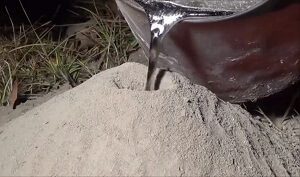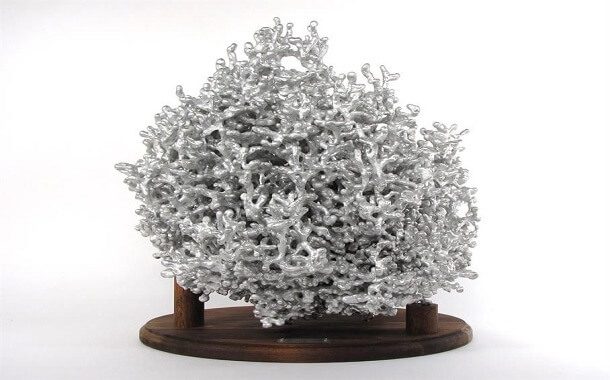Anthill Art Cost
Last Updated on September 14, 2023
Written by CPA Alec Pow | Content Reviewed by ![]() CFA Alexander Popinker
CFA Alexander Popinker
The artist who started this trend declared that he only uses the scum of invasive species, so as not to spoil the natural balance in the area where the casting is done. The procedure is simple: the artist pours molten aluminum inside an anthill and the liquid penetrates all the galleries of the colony. After some time, the metal cools down and solidifies and the rubbish is dug up and the solidified metal is washed.
How Much Does Anthill Art Cost?
The cost of anthill art would start at only a few hundred dollars and go up to more than a few thousand dollars. This price is affected by factors such as the competition and the piece.
At the time this article was written, there were more than 50 results available on eBay with costs starting at around $50 and going up to more than $320.
According to a member of the Straight Dope online forum, an auction for an anthill art piece started at almost $4,200.
Anthill art short presentation
It’s easy to imagine that an anthill is like a miniature city, isn’t it? It is natural, we could say, since an anthill has to host several thousand ants together, to offer them space not only for themselves but especially for the food that we have seen with our own eyes they willingly transport to the house, which should be enough to feed all of the colony members and is several times larger than the ants themselves.
You might also like our articles on the cost of embroidery, ice luges, or jewelry engraving.
On the other hand, the research of anthills by scientists and documentary filmmakers has always proved difficult, almost impossible, due to the sensitive structure of these underground constructions based on galleries that very easily collapse under the action of even small forces of us, humans. Filming inside the anthills is already impossible, no matter how small the cameras are, even the ones similar to the endoscopic ones used in surgery, because of the irregular shapes of the galleries, curves, and bends.
And then, why affect an anthill even for the sake of science or curiosity? Well, there are anthills that people shouldn’t touch and anthills that should be destroyed. One such trail of ant droppings was chosen to be the object of a study, the result turning into a work of art. The technique used was that of pouring molten aluminum into the anthill, aluminum which, being in a liquid state, easily crept through the galleries of the anthill, filling them, then solidifying as its temperature dropped.
What are the additional costs?
In case you purchase such a piece of art online, you should also consider the transportation and shipping costs.
Important things to consider
 It must be said that the anthill used for the first time in this art technique belonged to one (Solenopsis invicta) of the 280 species of red ants, a species originating from the South American continent, at the same time an invasive species in other areas of the globe (United States, Caribbean, Australia, Thailand, Taiwan, China), imported by mistake in these areas by sea voyages in the last hundreds of years.
It must be said that the anthill used for the first time in this art technique belonged to one (Solenopsis invicta) of the 280 species of red ants, a species originating from the South American continent, at the same time an invasive species in other areas of the globe (United States, Caribbean, Australia, Thailand, Taiwan, China), imported by mistake in these areas by sea voyages in the last hundreds of years.
Well, Solenopsis invicta is considered dangerous for both humans and animals in the areas where these ants settle and build their nests. They are very aggressive, much more aggressive than most species of ants, and have a particularly painful sting. When animals or even people step on the anthill, the ants attack en masse, their stings causing not only pain but also marks on the skin in the form of persistent white pustules.
They are also considered harmful because the construction of anthills leads to the damage of plant roots and the loss of crops, many of these colonies being found in the middle of cultivated fields, thus causing problems for their mechanical cultivation, an invasion of these ants also leading to the construction of around 40 anthills in an area of 2.5 acres. In addition, the living things in their area of influence are practically exterminated, from invertebrates to lizards, birds, and insects that live on the ground. This is the reason why these anthills are destroyed by various methods such as flooding with liquid nitrogen, boiled water, hot steam, and rarely molten aluminum.


Leave a Reply
Want to join the discussion?Feel free to contribute!